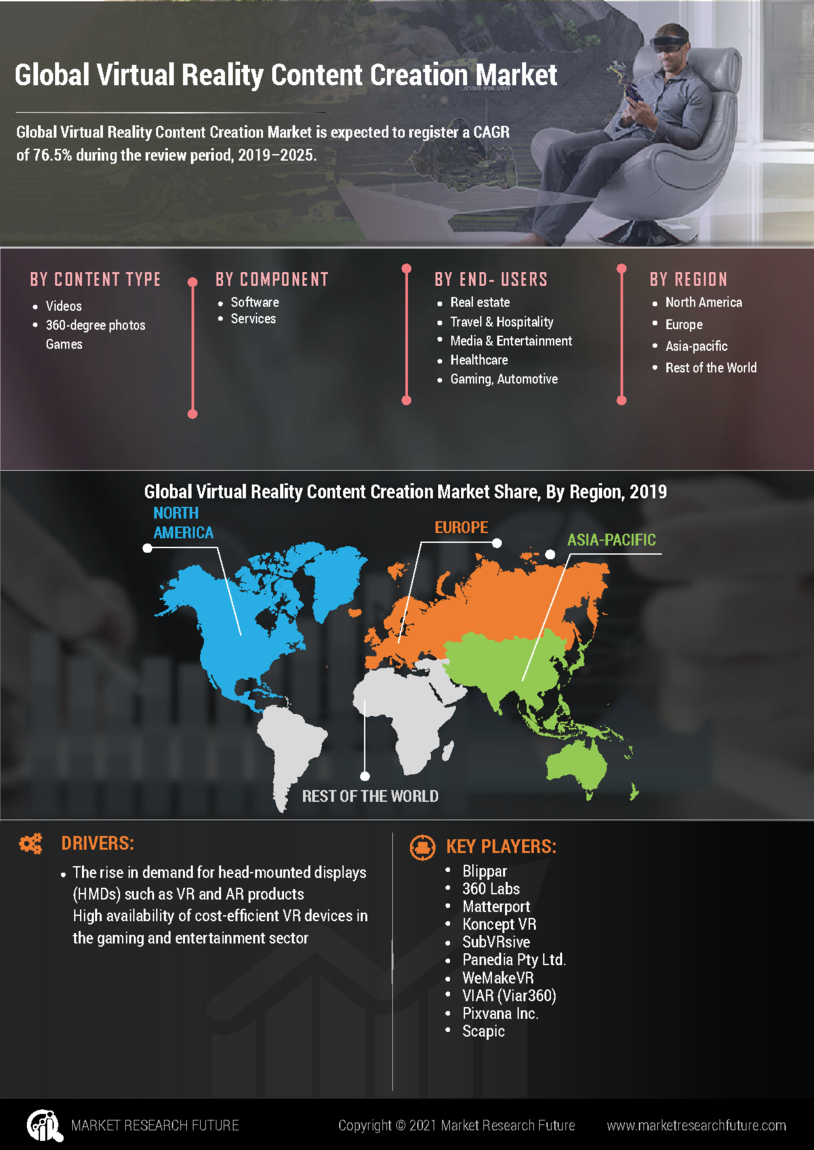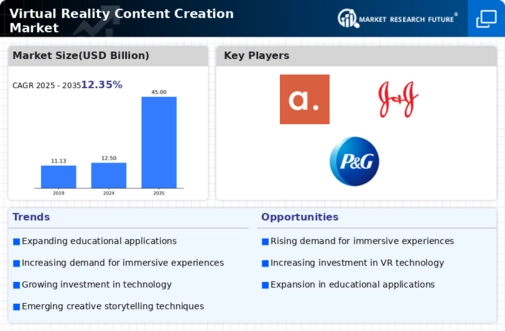Market Growth Projections
The Global Virtual Reality Content Creation Market Industry is poised for substantial growth, with projections indicating a market size of 12.5 USD Billion in 2024 and an anticipated increase to 45 USD Billion by 2035. This growth trajectory suggests a robust compound annual growth rate (CAGR) of 12.35% from 2025 to 2035. Such figures reflect the increasing investment in VR technologies and content creation, driven by consumer demand and industry adoption across various sectors. As the market evolves, it is expected to attract new players and foster innovation, further enhancing the diversity and quality of VR content available.
Growth of E-Learning Platforms
The Global Virtual Reality Content Creation Market Industry benefits from the expansion of e-learning platforms that incorporate VR technology. Educational institutions and training organizations are increasingly adopting VR to create interactive learning environments that enhance student engagement and retention. For instance, VR simulations allow learners to practice real-world scenarios in a safe setting, which is particularly valuable in fields such as aviation and medicine. As e-learning continues to evolve, the integration of VR is likely to become more prevalent, contributing to the market's growth and attracting investments in content creation tailored for educational purposes.
Technological Advancements in VR
The Global Virtual Reality Content Creation Market Industry is propelled by rapid technological advancements in virtual reality hardware and software. Innovations such as improved graphics processing units, enhanced motion tracking, and more immersive audio systems contribute to the creation of high-quality content. For instance, the introduction of 8K resolution displays and advanced haptic feedback systems allows creators to produce more engaging experiences. As a result, the market is projected to reach 12.5 USD Billion in 2024, indicating a growing demand for sophisticated VR content that meets the expectations of consumers and businesses alike.
Supportive Government Initiatives
Government initiatives aimed at promoting technological innovation play a crucial role in the Global Virtual Reality Content Creation Market Industry. Various countries are investing in VR research and development, recognizing its potential to drive economic growth and enhance competitiveness. For example, funding programs and grants for VR startups encourage the development of new content and applications. These initiatives not only support the growth of the industry but also foster collaboration between academia and industry, leading to the creation of cutting-edge VR solutions. This supportive environment is likely to accelerate market expansion and innovation in the coming years.
Increasing Adoption Across Industries
The Global Virtual Reality Content Creation Market Industry experiences significant growth due to the increasing adoption of VR technology across various sectors. Industries such as education, healthcare, and real estate are leveraging VR for training, simulations, and virtual tours. For example, medical institutions utilize VR for surgical training, enhancing the skills of future surgeons. This trend is likely to expand as organizations recognize the potential of VR to improve efficiency and engagement. The market is expected to grow at a CAGR of 12.35% from 2025 to 2035, reflecting the sustained interest in VR applications across diverse fields.
Rising Demand for Immersive Experiences
Consumer demand for immersive experiences drives the Global Virtual Reality Content Creation Market Industry forward. As audiences seek more engaging and interactive content, creators are compelled to innovate and enhance their offerings. This trend is particularly evident in the gaming and entertainment sectors, where VR provides unique experiences that traditional media cannot match. The market's growth is indicative of this shift, with projections suggesting it will reach 45 USD Billion by 2035. This increasing demand for immersive content encourages developers to explore new storytelling techniques and interactive formats, further enriching the VR landscape.














Leave a Comment